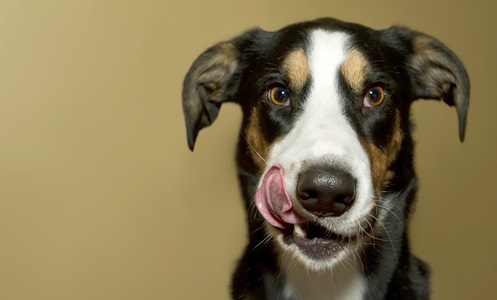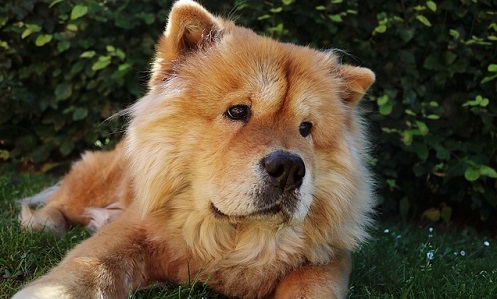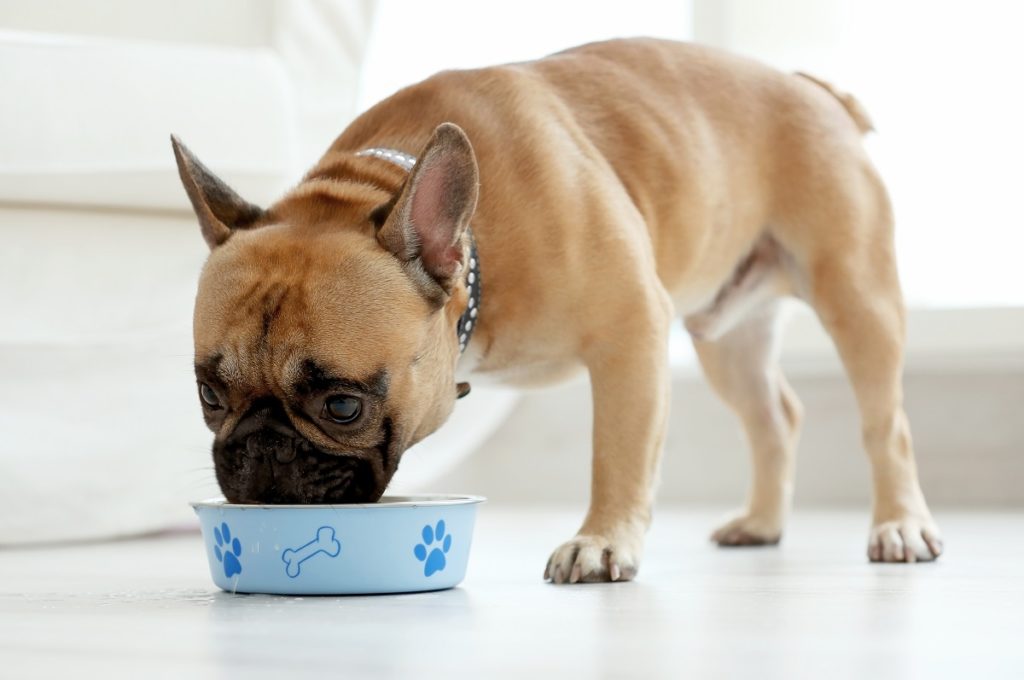While dogs can basically eat anything and be just fine, occasionally, your pet may find themselves in the midst of some stomach issues. If your dog is experiencing vomiting or diarrhea brought on by a stomach bug or foreign body in the intestinal tract, veterinarians will recommend feeding him a bland diet in an attempt to reset their digestive system.
These simple meals will soothe their intestinal tract and help to restore normal eating, drinking and bowel movements. These foods allow him to eat, keep food down and get the nutrients he needs to recover while fighting the sickness. This is a highly digestible, low in stomach-upsetting fat, diet that will be sure to get your dog feeling normal again. However, with so many products on the market, it can be difficult to choose a bland food for dogs with sensitive stomachs. That’s why it is critical that you check with your veterinarian first, but more times than not they will send you home with these simple recipes and tell you to continue feeding your sick dog the bland diet until he is feeling one hundred percent again.
When Should I Feed My Dog the Bland Diet?
Stomach issues can occur in your pup for a multitude of reasons. If your dog has canine vomiting or having stool issues after an incident you can clearly pick out as being the reason, switching over to a bland food diet for dogs is a great way to avoid a trip to the veterinarian.
If you do not know the reason for your dog’s sickness or see other health issues such as blood in his vomit or stool, running a fever or lethargy, call your veterinarian before caring for him with home remedies. Continued vomiting, when left untreated, can cause dehydration, and more serious issues. If you believe your dog has ingested something poisonous or toxic, call your poison control or veterinarian immediately.
If your dog is a puppy and has continual vomiting and diarrhea, take him to the veterinarian immediately, as this can be a sign of canine parvovirus. Puppies are also incredibly sensitive to dehydration and will need to be monitored and potentially have fluids administered to him by your veterinarian.
In the less serious cases, a phone call to your veterinarian will most likely end up with them prescribing the bland diet. Some causes of simple stomach upset can be caused by changes in your dog’s diet without easing him into it, him eating a food you know generally upsets his stomach or if he has recently encountered stressful situations such as moving or being in the car for long periods of time. These simple problems can be fixed with a consistent, simple diet and rest. The most important thing is to ensure your dog is getting the nutrients and water he needs during this uncomfortable time.
Administering the Bland Diet
Most veterinarians will suggest starting a bland diet a few hours after the last time your dog has vomited or had diarrhea to make it easier for him to keep the food down. Once the time has come, you may begin giving your dog water in very small amounts and see how he reacts. If he doesn’t begin vomiting again in the next three hours, you can begin administering the bland diet of your choosing. It is best to begin with very small portions of food until you are sure he can eat more without triggering more stomach issues. You will continue to feed your dog small meals every few hours to ensure the bland diet is working for him.
 You can continue feeding your dog in this manner for the next two to three days after the vomiting has subsided and his stool returns to normal. After a few days, you may begin mixing the bland diet with his regular food for another week until you are certain his intestinal tract has settled. Be sure to also track how much water your dog is drinking to avoid dehydration.
You can continue feeding your dog in this manner for the next two to three days after the vomiting has subsided and his stool returns to normal. After a few days, you may begin mixing the bland diet with his regular food for another week until you are certain his intestinal tract has settled. Be sure to also track how much water your dog is drinking to avoid dehydration.
Bland Diet Recipes
Remember to start feeding your dog in small increments over a few hours as to not worsen his stomach issues. Here are some simple, at-home recipes you can whip up for your dog in the case of an upset stomach:
Chicken and Rice
What you need: chicken breast and white rice
Preparation: Boil the rice until well cooked and soft. In a separate container, boil the boneless, skinless chicken breast. Shred the chicken into small, bite-sized pieces to make it easier on your dog’s stomach. Mix the rice and chicken, with the rice being the heavier portion of the meal.
Shredded Chicken
What you need: boneless, skinless chicken breast
Preparation: Plain, unseasoned, boiled and shredded chicken is one of the easiest to digest foods you can serve your ailing pup. Simply boil the chicken and shred it to have small snacks for your dog during the day. This is a perfect option for the first few days when you are trying to feed him small meals, over multiple hours.
Pumpkin
What you need: canned pumpkin
Preparation: Canned pumpkin has amazing health benefits for your dog. Pumpkin is high in fiber and will help to regulate your dog’s stool, making it more solid. It also includes a variety of vitamins and minerals that will speed up your pet’s recovery. You can mix pumpkin with any of the bland diet’s here or add it to your dog’s regular food if you have a very mild case of diarrhea. Veterinarians generally suggest four tablespoons, but this will depend on your dog’s size as well.
Bone Broth
What you need: beef marrow bones
Preparation: To make this liquid diet for your dog, you will need to put beef marrow bones in a crock pot, cover them in two to three inches of water and cook on low for 24 hours. Cool the broth and either feed it to him in jelly form out of the fridge or add it to soften dry food later in the diet. This is a great meal to have on deck if your dog has an especially sensitive stomach. Be sure to remove all bones from the broth before serving it to your dog as they can be dangerous and splinter in his throat.
Eggs
What you need: eggs
Preparation: Simply scramble the eggs without adding any butter or milk to the mixture. This is a good substitute when you don’t have rice, chicken or pumpkin to use. You can also boil the eggs. Do not use seasoning or salt as that may upset your dog’s stomach further.
Baby Food
What you need: Stage II meat-based baby food
Preparation: While it may seem unconventional to feed your dog baby food, many veterinarians keep stocks of it in the hospital to feed to ailing dogs. These mush mixtures are easy to digest and swallow. The stage II meat-based baby foods are not appealing to your dog and come in flavors of chicken, lamb and turkey. This is one of the least labor-intensive bland diets you can feed to your dog in a time pinch.
Hamburger and Rice
What you need: white rice and lean hamburger meat
Preparation: Boil the rice until well cooked and soft. In a separate container, boil the lean hamburger meat and drain the fat. The less fat, the easier it will be on your dog’s stomach. Mix the rice and hamburger, with the rice being the heavier portion of the meal.
Fish and Sweet Potato
What you need: white fish and sweet potatoes
Preparation: Peel the sweet potato, cut into cubes and boil them for twelve minutes. Bake the white fish in the oven for 35 minutes with sunflower oil. Cut into small pieces and combine for your dog. This is a good transitional bland diet option for when your dog is further along the regimen. Sweet potatoes have a lot of vitamins C, B6, B5, manganese, potassium, and fiber. Similar to pumpkins and carrots, the fiber in sweet potatoes will alleviate an upset stomach and solidify stool.
Cottage Cheese
What you need: Low fat cottage cheese
Preparation: While veterinarians recommend using cottage cheese sparingly, it has high amounts of protein and fat that help make your dog’s stool solid. Do not over-serve to your dog and if necessary, mix with rice if it is too rich for him. Do not feed it to your dog if he is lactose intolerant.
Watermelon
 What you need: Large, sliced up and deseeded watermelon
What you need: Large, sliced up and deseeded watermelon
Preparation: Once the seeds are removed and the watermelon is sliced, serve to your dog in small amounts. Watermelon is high in fiber and water which will help solidify waste and reduce the chance of dehydration. Watermelon is also low in calories, easy on the stomach and full of vitamins that will strengthen your dog’s immune system.
What to Do After the Bland Diet
If your dog’s symptoms have not resolved themselves in two to three days, you must take him to the veterinarian to be observed.
While the bland diet is great for ailing dogs, it is not nutritionally dense enough for your dog to continue eating for long. These diet options are too low in calories for your dog to live off of.. It should only be fed to your dog for a maximum of five days. This is when the stools should be completely solid again and vomiting should have subsided after the first or second day. When this occurs, begin mixing the bland diet with your regular food and slowly reintroduce him to a completely solid diet. Consult your veterinarian if any long-term digestive issues persist or new ones form from the bland diet.
Sources:
- “BLAND DIET OPTIONS FOR DOGS.” Under The Weather, undertheweatherpet.com/blog/bland-diet-options-for-dogs/.
- Burke, Anna. “6 Natural Foods to Feed Your Sick Dog.” American Kennel Club, 9 Aug. 2016, www.akc.org/expert-advice/nutrition/six-foods-to-feed-your-dog-when-hes-sick/.
- Care.com, Inc. “Bland Diet For Dogs: How And When To Use Them And Recipes To Try.” Care.com, www.care.com/c/stories/6316/bland-diet-for-dogs-how-and-when-to-use-them/.
- Farricelli, Adrienne Janet. “Bland Diet Recipes for Dogs With Upset Stomach.” PetHelpful, PetHelpful, 29 May 2019, pethelpful.com/dogs/Bland-Diet-Recipe-for-Dogs.




